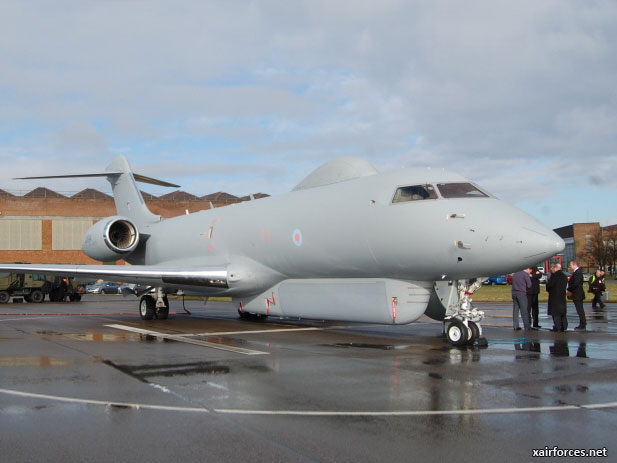
Merits of Sentinel Radar Touted, as Axe Looms

Officials from Raytheon UK and personnel from the Royal Air Force (RAF) are emphasizing the excellent performance of the Sentinel R.1 Airborne Stand-Off Radar (Astor) system over Afghanistan and Libya.
They are hoping that the UK Ministry of Defence will reverse its 2010 decision to withdraw the ground surveillance system, which flies on five Bombardier Global Express business jets, after most British troops leave Afghanistan in 2014.
Operating from Akrotiri airbase, Cyprus, RAF Sentinels flew more than 2,000 hours during NATO’s Libyan air campaign. They collected wide-area and spot-scene moving-target and synthetic radar mapping imagery that could be processed and interpreted on board, with reports quickly disseminated by voice, Link 16 and other means. Intelligence obtained by the Sentinel missions “was the only product briefed daily to the four-star commander,” according to one RAF staff officer. “Our ability to do ‘pattern of life’ analysis is of great value in an insurgency war like Afghanistan, and in situations like Libya where it is difficult to discern the good guys from the bad,” said another officer from the Sentinel operating squadron.
Raytheon revealed that its new portable integrated mission planner had been used at Akrotiri to do post-flight analysis of the radar data recorded by the Sentinel missions, as well as mission planning. The mission planner uses the latest commercial server technology, packed into three rugged, portable containers. “It’s a low-cost ground station,” said Paul Francis, head of airborne solutions for Raytheon UK. When the Astor system was delivered in 2007-09, it included two ISO-containerized main ground stations and six mobile truck-mounted tactical ground stations (TGS). Francis said that Raytheon UK is now using company funds to add satellite communications and networking capability to the portable integrated mission planner. Since another Raytheon official told AIN that the portable integrated mission planner has all the functionality of the TGS, such a development would seem to make the latter redundant.
In a further effort to keep the Sentinel in service, Raytheon has offered to add a maritime surveillance mode to the radar. Only minor computing changes would allow the detection of surface vessels “and potentially submarine periscopes,” the company said. In another 2010 defense cut, the UK scrapped plans to introduce the dedicated Nimrod MRA.4 maritime patrol aircraft.
If the UK does withdraw the Sentinel in 2015, it will have to make an alternative contribution to the new NATO Allied Ground Surveillance (AGS) system. Thirteen NATO nations are funding the acquisition of five Global Hawk UAVs and their associated ground stations, but the other 16 NATO members are expected to contribute in kind, or financially.
Source: By Chris Pocock - April 6, 2012 (ainonline.com)
Photo: The RAF and Raytheon are lobbying to spare the Sentinel radar surveillance aircraft from British defense cuts. (Photo: Chris Pocock)
(6.04.2012)
|